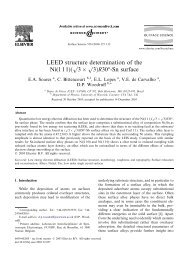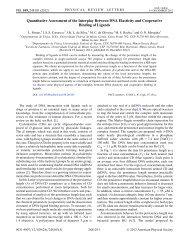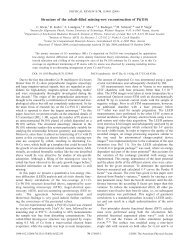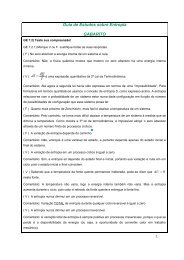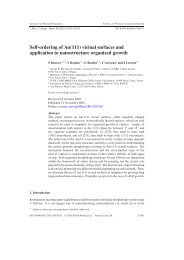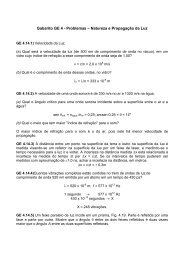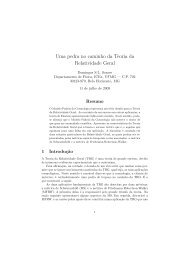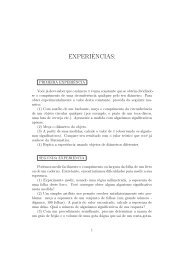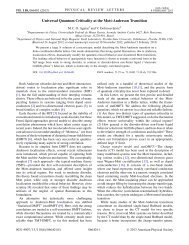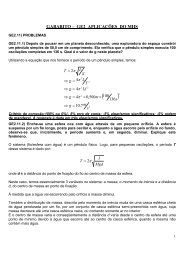Fundamental Statistical Mechanics
Fundamental Statistical Mechanics
Fundamental Statistical Mechanics
You also want an ePaper? Increase the reach of your titles
YUMPU automatically turns print PDFs into web optimized ePapers that Google loves.
1<br />
2<br />
( )<br />
Hn +1 ≤ ∫ d x ′ Wn ( x ′ )ln Wn ( x ′ ) + ∫ dxWn ( x ′ )lnW n ( x ′ )<br />
0<br />
That is, we obtain a H -theorem in the form<br />
H n +1 ≤ H n<br />
Note that H stays constant if W is a constant.<br />
1<br />
1<br />
2<br />
( )<br />
Reverting for the moment to a physical system, a dilute gas, we know that the phase space<br />
distribution function is the fundamental distribution which really determines the behaviour of an<br />
ensemble of systems not in equilibrium and that the function which satisfies the Boltzmann<br />
equation is the single particle distribution function, obtained by integrating over the variables of<br />
all but one of the particles. Bogoliubov has argued that one can separate rapidly varying<br />
functions from slowly varying functions, and the physically interesting functions change slowly<br />
with time. The time scales that Bogoliubov thought were relevant in a gas are the duration of<br />
binary collisions, the mean free time between collisions, and the time it takes a particle to travel a<br />
macroscopic distance. Applying Bogoliubov's arguments to the baker's transformation we would<br />
expect that the x variable is slowly varying while the y variable is rapidly varying.<br />
What happens if we integrate the x coordinate rather than the y coordinate?<br />
We need to look at the evolution of density differently<br />
where<br />
ρ n −1 (x, y) = ρ n (b(x), b(y))<br />
⎧ ρn (2x, y 2) forx 1 2<br />
1<br />
∫<br />
V n−1 (y) = dx ρ n−1 (x, y)<br />
0<br />
1<br />
2<br />
= ∫ dx ρn (2x, y 2) + ∫ dx ρn (2x −1,( y +1) 2)<br />
0<br />
1<br />
1<br />
2<br />
= 1<br />
2 d ′ x ρ 1<br />
∫ n ( x ′ , y 2) +<br />
0<br />
1<br />
1<br />
∫ 2<br />
0<br />
= 1 2V ⎛ y<br />
n⎝<br />
2<br />
⎞<br />
⎠ + 1 2 V ⎛ y +1⎞<br />
n⎝<br />
2 ⎠<br />
d ′ x ρn ( x ′ ,(y +1) 2)<br />
<strong>Statistical</strong> <strong>Mechanics</strong> Page 43



